Death Valley National Park is a land of extremes—where scorching deserts, towering peaks, and surreal landscapes collide. From shimmering salt flats to shifting dunes, its raw beauty invites adventurers to explore Earth’s most dramatic desert.
Step into a landscape that defies expectations. Death Valley National Park is a place where nature tests the limits of life and terrain. Nestled between California and Nevada, it is the hottest, driest, and lowest national park in the United States. But behind these extremes lies a stunning and complex environment that rewards those who dare to explore it.
Whether you’re drawn by curiosity, photography, or the thrill of venturing into one of Earth’s most otherworldly places, Death Valley offers a rich and varied experience. From ancient geologic formations and cultural history to rare desert blooms and clear night skies, the park presents a deeply immersive encounter with nature. This is more than a stop on a road trip—it’s an invitation to witness a world shaped by time, resilience, and the raw power of natural forces.
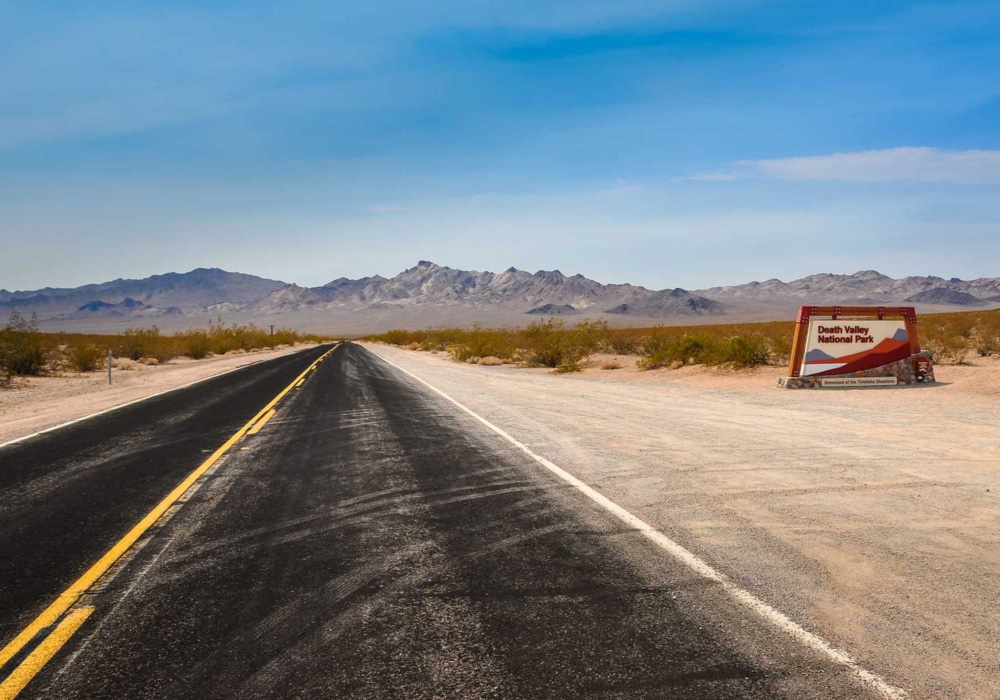
Overview of Death Valley National Park
Located in eastern California, Death Valley National Park spans over 3 million acres of diverse terrain. It is a land of sharp contrasts—towering peaks, salt-covered flats, colourful canyons, and shifting dunes. Despite its name, the park teems with life, shaped by thousands of years of adaptation. With a deep Indigenous heritage and a vivid mining past, its human history is just as compelling as its geological wonders.
A walk through time: The park’s rich history
Long before it became a national park, Death Valley was home to the Timbisha Shoshone people, who adapted ingeniously to its challenges. Their legacy lives on in petroglyphs and oral traditions. The 19th century brought gold seekers and borax miners, whose ghost towns and abandoned wagons still dot the landscape. One of the most well-known events was the ill-fated journey of the '49ers, who became stranded in the valley and gave it its ominous name. By the early 20th century, scientists and conservationists began recognizing the area’s ecological and geological significance.
Historical timeline:
| Date | Event |
|---|---|
| Pre-1800s | Timbisha Shoshone inhabit the valley |
| 1849 | ''49ers become stranded during the Gold Rush |
| 1933 | Designated as a national monument |
| 1994 | Upgraded to national park status |
Geologic wonders of Death Valley
Death Valley National Park is a living testament to the Earth’s ancient and ongoing transformation. Its terrain is a geologic mosaic, shaped by powerful tectonic shifts, volcanic activity, and the passage of millions of years. From parched valley floors to sharply ridged mountains, wind-sculpted dunes to vividly colored canyons, the landscape shifts with striking contrast. Far more than a desert, this park is a natural archive that reveals Earth's dynamic processes in dramatic, tangible form.
Among its many marvels, several stand out for their sheer visual impact and geological significance. These iconic features are not only accessible but deeply immersive, offering visitors a chance to witness nature’s artistry up close.
Badwater Basin
At 282 feet below sea level, Badwater Basin is the lowest point in North America. Once a prehistoric lakebed, it now glistens with thick salt crusts arranged in honeycomb-like polygons. As sunlight shifts over the basin, the reflective patterns transform, making it a favourite among photographers, especially at dawn and dusk. Walking across this surreal terrain offers both a sensory and geological immersion into Death Valley’s hydrological history.

Mesquite Flat Sand Dunes
Located near Stovepipe Wells, these dunes are among the park’s most recognizable landmarks. Constantly shaped by the wind, they form sweeping crescents and intricate ripples that come alive in the low-angle light of sunrise and sunset. The Mesquite Flat Sand Dunes offer a dreamlike setting for hiking, photography, or simply taking in the desert's serene silence. Their accessible location and cinematic beauty have made them a backdrop for countless films.
Eureka Dunes
Far from the crowds and nestled in remote Eureka Valley, the Eureka Dunes are the tallest in California, reaching heights up to 680 feet. Their steep slopes and striking isolation create a uniquely dramatic experience. When the conditions are just right, the sand produces a deep humming sound as it shifts—earning them the nickname “singing dunes.”
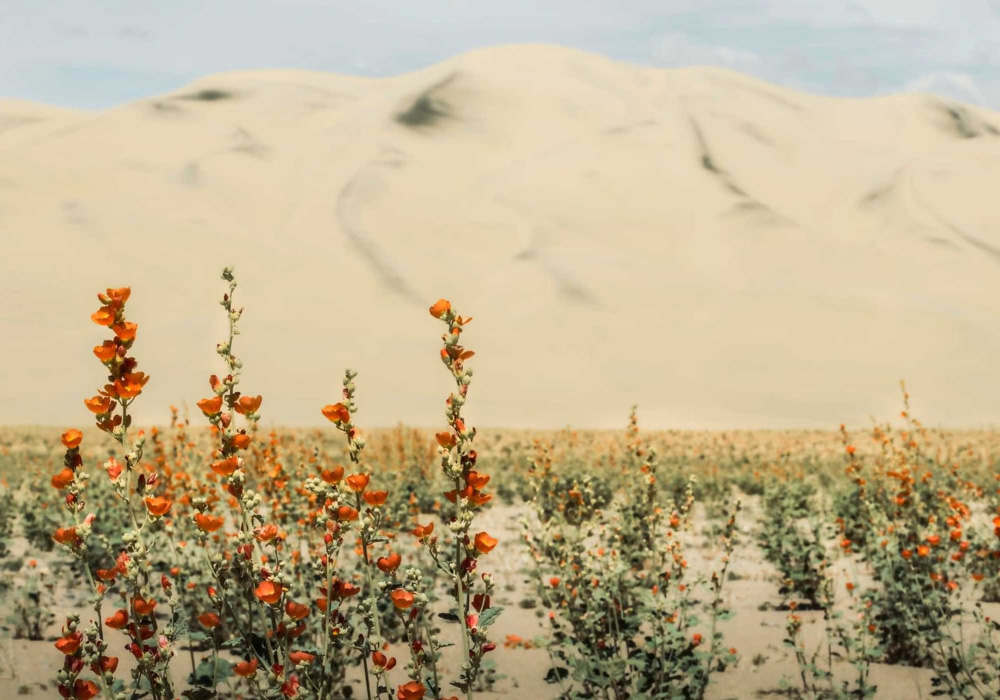
The journey to reach them requires a high-clearance vehicle and a bit of perseverance, but the reward is profound: solitude, surreal beauty, and an unforgettable acoustic phenomenon under the vast desert sky.
Zabriskie Point
This popular viewpoint delivers a breathtaking panorama of golden badlands carved from sediments of ancient Furnace Creek Lake. Best experienced at sunrise, the undulating ridges and peaks glow with hues of gold, brown, and cream. The site offers a stark yet stunning contrast to the flat salt basins and distant mountain ranges, revealing the complex layered geologic history of the park.

Artist’s Palette
Driving along Artist’s Drive brings you to this surreal, technicolour hillside, where mineral-rich rock has been naturally stained in shades of pink, purple, turquoise, and green. Caused by the oxidation of various metals, this kaleidoscopic formation is most vivid in the late afternoon when the colours are set ablaze by the sinking sun. It's one of Death Valley’s most photographed—and otherworldly—spots.
Golden, Titus, and Mosaic Canyons
Death Valley’s canyons delve deep into the heart of its geological narrative.
- Golden Canyon glows with yellow and red hues, its narrow trail leading to stunning viewpoints, such as the Red Cathedral.
- Titus Canyon, navigable via a rugged one-way road, boasts towering limestone walls, fossil deposits, and even an old ghost town.
- Mosaic Canyon boasts smooth, water-polished marble walls and unique breccia rock formations—testimony to centuries of flash flood sculpting.
Each canyon offers a unique hiking experience, ranging from leisurely strolls to more challenging backcountry treks. Together, they illustrate the powerful interplay of water, time, and stone.
Adventures await: Hiking, stargazing, and more
Adventure in Death Valley takes many forms—from sunrise treks through painted canyons to stargazing beneath some of the clearest night skies in North America. Whether you're a seasoned hiker, a curious photographer, or simply someone eager to experience nature's extremes, the park offers a spectrum of activities that bring its otherworldly beauty to life.

Hiking trails for every level
With landscapes that shift from narrow marble canyons to towering mountain peaks, Death Valley is a hiker’s dream. Trails range from short, scenic walks to full-day challenges, making it easy for all visitors to experience the park on foot.
- Golden Canyon Trail (2 miles round-trip): One of the most accessible and visually rich trails, it winds through colourful rock walls and leads to views of the Red Cathedral. Ideal for morning hikes before the desert heat sets in.
- Mosaic Canyon (up to 4 miles round-trip): Famous for its polished marble narrows, this trail reveals natural rock corridors shaped by water and time. The twisting path offers both fun scrambling and fascinating geology.
- Badwater Basin Trail (flat, customizable length): Walk across the lowest point in North America on a wide-open salt pan. Great for easy exploration and dramatic, wide-angle photos.
- Telescope Peak Trail (11 miles round-trip): A strenuous hike that rewards ambitious trekkers with panoramic views from the highest point in the park at over 11,000 feet. On clear days, you can see both Mount Whitney and Badwater Basin from the summit.
Each trail invites visitors into the park’s geologic story, where every step uncovers layers of time and terrain.
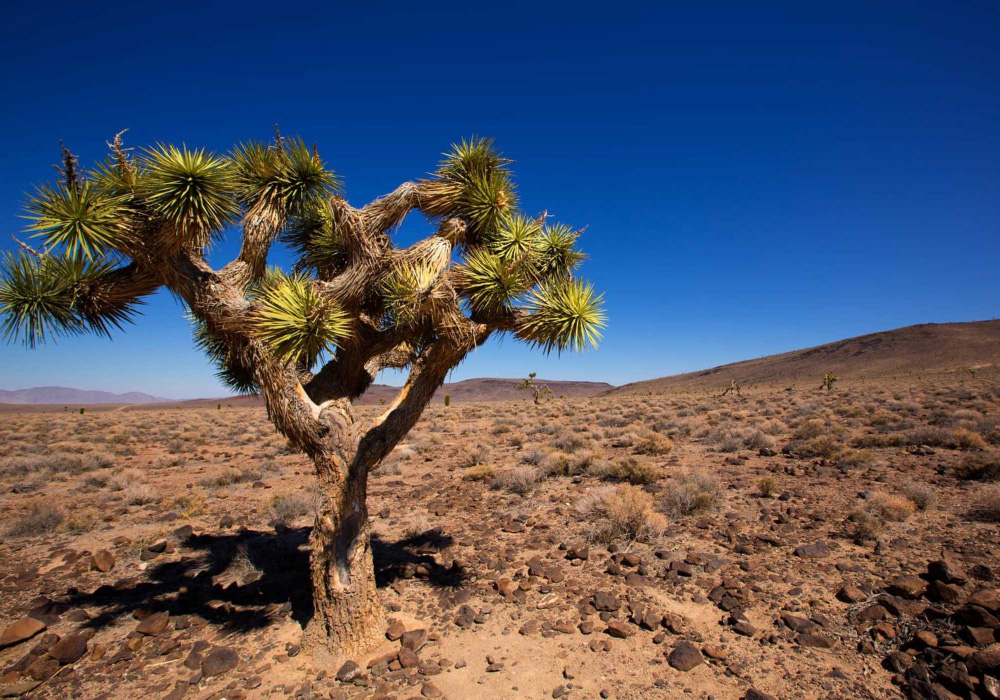
Unforgettable landmarks and viewpoints
Beyond the trails, Death Valley’s scenic highlights are accessible by car or short walks, offering awe-inspiring views and one-of-a-kind natural features.
- Dante’s View: This high-elevation overlook provides a sweeping panorama of Death Valley’s floor, stretching from salt flats to distant peaks. It’s especially stunning at sunrise.
- The Racetrack Playa: Located deep in the backcountry, this remote dry lakebed is famous for its "sailing stones"—rocks that mysteriously glide across the playa, leaving tracks in their wake.
- Devil’s Golf Course: A surreal expanse of jagged salt spires. Although not ideal for hiking, it’s a visual marvel and a photographer’s dream—especially in late-afternoon light.
These iconic spots reveal the extremes of Death Valley’s landscape in ways that are accessible, photogenic, and deeply memorable.

Photography opportunities
Photographers are drawn to Death Valley’s constantly shifting light, textures, and bold natural contrasts. Whether using a smartphone or DSLR, you’ll find countless chances to capture the drama of the desert.
- Mesquite Flat Sand Dunes: Best photographed at sunrise when soft light emphasizes the sculpted ridges and undisturbed textures of the sand.
- Artist’s Palette: Vibrant mineral deposits splash these hillsides with purples, greens, and pinks, which come alive during golden hour.
- Zabriskie Point: An iconic lookout that showcases erosional badlands in layered hues—ideal for sunrise photography.
- Devil’s Golf Course: Abstract compositions of twisted salt formations make for dramatic black-and-white or detail-focused shots.

Bring extra batteries and memory cards—this is a place where every turn presents a new opportunity for a memorable moment.
Stargazing under pristine skies
When the sun sets, Death Valley reveals one of its greatest treasures: a night sky largely untouched by light pollution. Designated as a Gold Tier Dark Sky Park, it offers exceptional conditions for stargazing, astrophotography, and celestial contemplation.
-
Harmony Borax Works and Ubehebe Crater are excellent spots to set up for the night, offering clear horizons and wide-open skies.
-
The park regularly hosts the Death Valley Dark Sky Festival, featuring ranger-led astronomy walks, telescope viewing stations, and talks by NASA scientists and astrophysicists.
Gazing upward, you’ll see the Milky Way stretch across the sky, planets rise with crystalline clarity, and meteor showers blaze overhead—reminding you of the vast universe beyond this already extraordinary landscape.

Planning your visit: Tips for a safe and rewarding journey
Exploring Death Valley National Park is an unforgettable experience, but it requires thoughtful preparation due to its remote location and extreme conditions. From timing your visit to knowing what to pack, a little planning goes a long way toward ensuring a safe, comfortable, and awe-inspiring journey.
Best time to Visit
Timing your trip is one of the most important decisions when visiting Death Valley. While the park is open year-round, the ideal window for most travellers is from November through March, when temperatures are cooler and more suitable for outdoor exploration.
During these months, daytime highs are generally in the 60s to low 80s°F, and nights can be brisk—perfect for hiking, sightseeing, and stargazing. You’ll also catch desert wildflowers blooming after winter rains.
| Month | Average High | Average Low |
|---|---|---|
| November | 73°F | 48°F |
| January | 64°F | 39°F |
| March | 80°F | 53°F |
By contrast, summer temperatures routinely soar past 120°F (49°C), making outdoor activity extremely hazardous. If you must visit in summer, limit physical exertion to early morning or late evening and focus on air-conditioned or shaded sites.
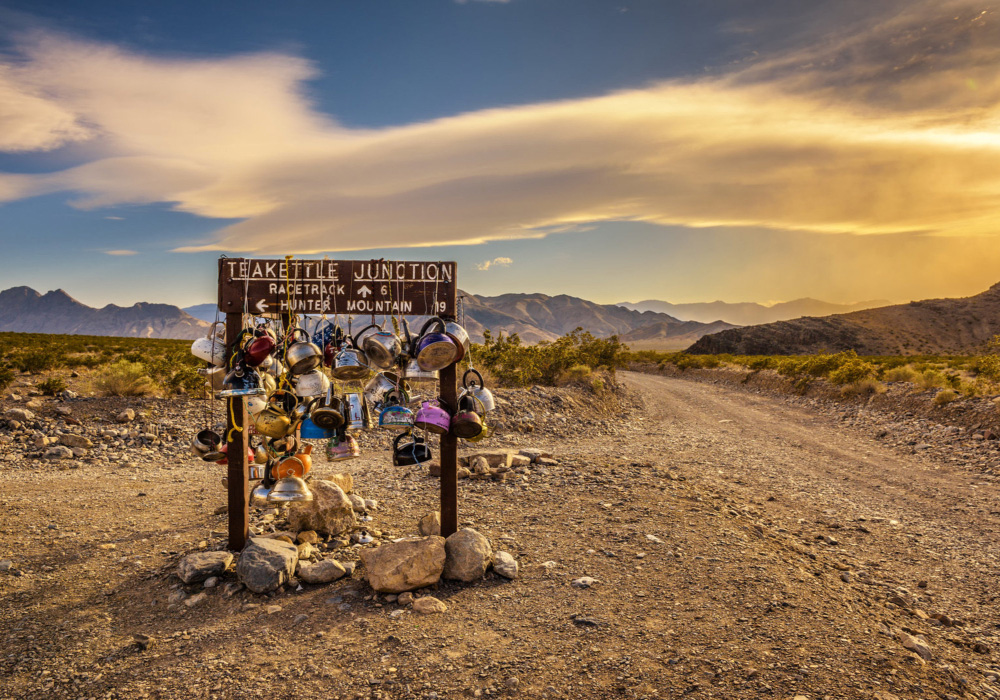
Safety guidelines for desert travel
Death Valley’s beauty is matched by its harshness, so safety should always be a top priority. The remote nature of the park means help is not always readily available, so preparation is key.
- Hydration is essential: Carry and drink at least one gallon (4 litres) of water per person per day, even if you're not hiking. Dehydration can occur quickly in arid climates.
- Stay off trails in extreme heat: Avoid midday activity during warmer months and rest in shaded areas when possible.
- Stay on marked trails and roads: Many unmarked paths can be disorienting, and GPS often misleads in the backcountry. Always carry a physical map or park guide.
- Check weather conditions: Sudden flash floods, high winds, or extreme heat can occur even during cooler seasons. Check the National Park Service website or visitor center for real-time alerts.
- Vehicle readiness: Ensure your car is in excellent condition with a full tank of gas. There are a few service stations in or around the park, and cell coverage is limited.
Well-prepared visitors find Death Valley’s extremes to be part of its charm—a landscape where thoughtful planning transforms potential hazards into remarkable memories. Whether you're gazing at the Milky Way from Harmony Borax Works or hiking to a windswept overlook, the key to a successful trip is respecting the desert and being ready for all it offers.
Final thoughts
Death Valley National Park defies expectations at every turn. It’s a place of extremes that reveals the resilience of life, the beauty of geology, and the richness of history. Whether you come to hike, stargaze, photograph, or reflect in silence, you’ll find yourself humbled by its scale and complexity.
Every dune, canyon, and salt flat tells a story—not just of survival, but of quiet splendour. And long after the desert wind settles and the sun sinks below the horizon, Death Valley leaves an imprint that lingers. It is a destination that transforms those who venture into its heat and silence, reminding us of our connection to the vast, untamed world.

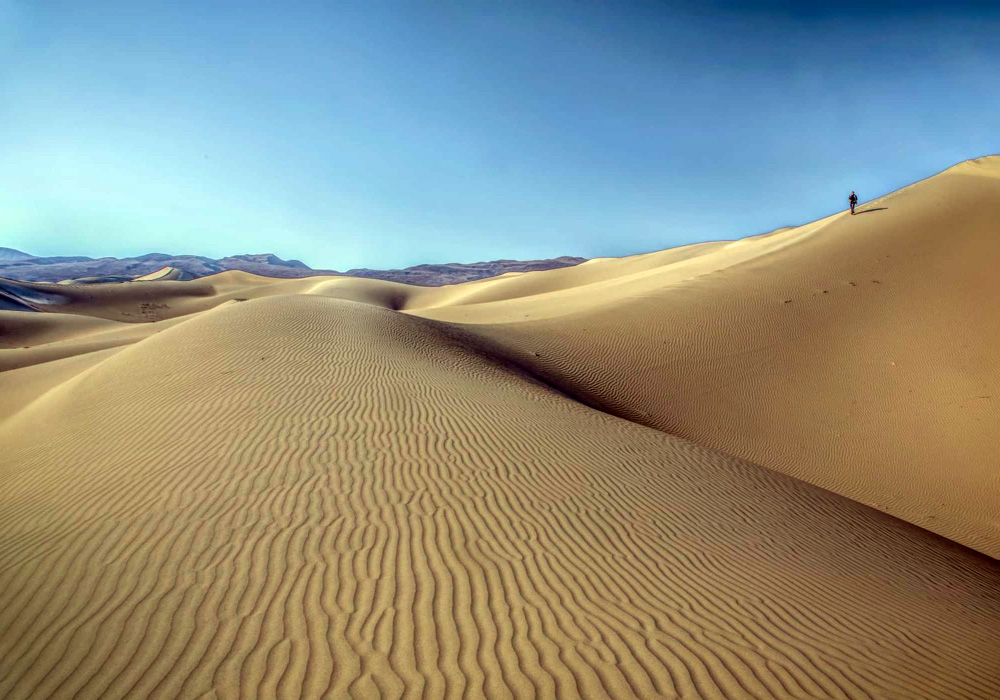

Comments powered by CComment